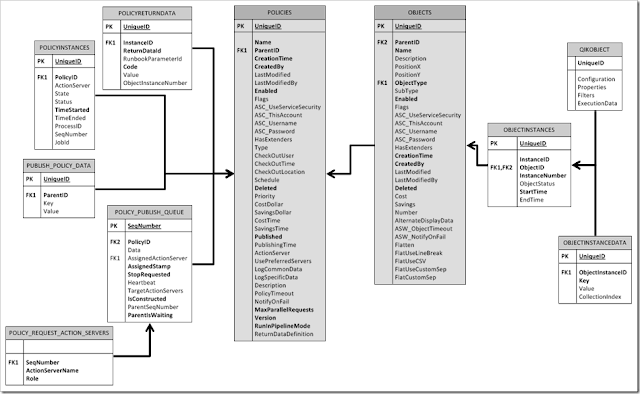SCO general

Trace Logs C:\ProgramData\Microsoft System Center 2012\Orchestrator You'll find most stuff under C:\ProgramData\Microsoft System Center 2012\Orchestrator\ManagementService.exe\Logs. When I had problems with the runbook service stopping I got some good info in C:\ProgramData\Microsoft System Center 2012\Orchestrator\RunbookServerMonitorService.exe\Logs. Services Orchestrator Management Service (omanagement) Installed on management server Maintains the Orchestrator database Communicates with runbook designers and deployment manager Orchestrator Runbook Server Monitor (omonitor) Installed on management server Monitors health of runbook servers Orchestrator Runbook Service (orunbook) Installed on each runbook server Runs the actual runbooks and communicates with the Orchestrator database Orchestrator Remoting Service (oremoting) Enables the Orchestrator Deployment Manager to deploy Runbook Designer, Runbook Server, or integration packs Runbook table relationships